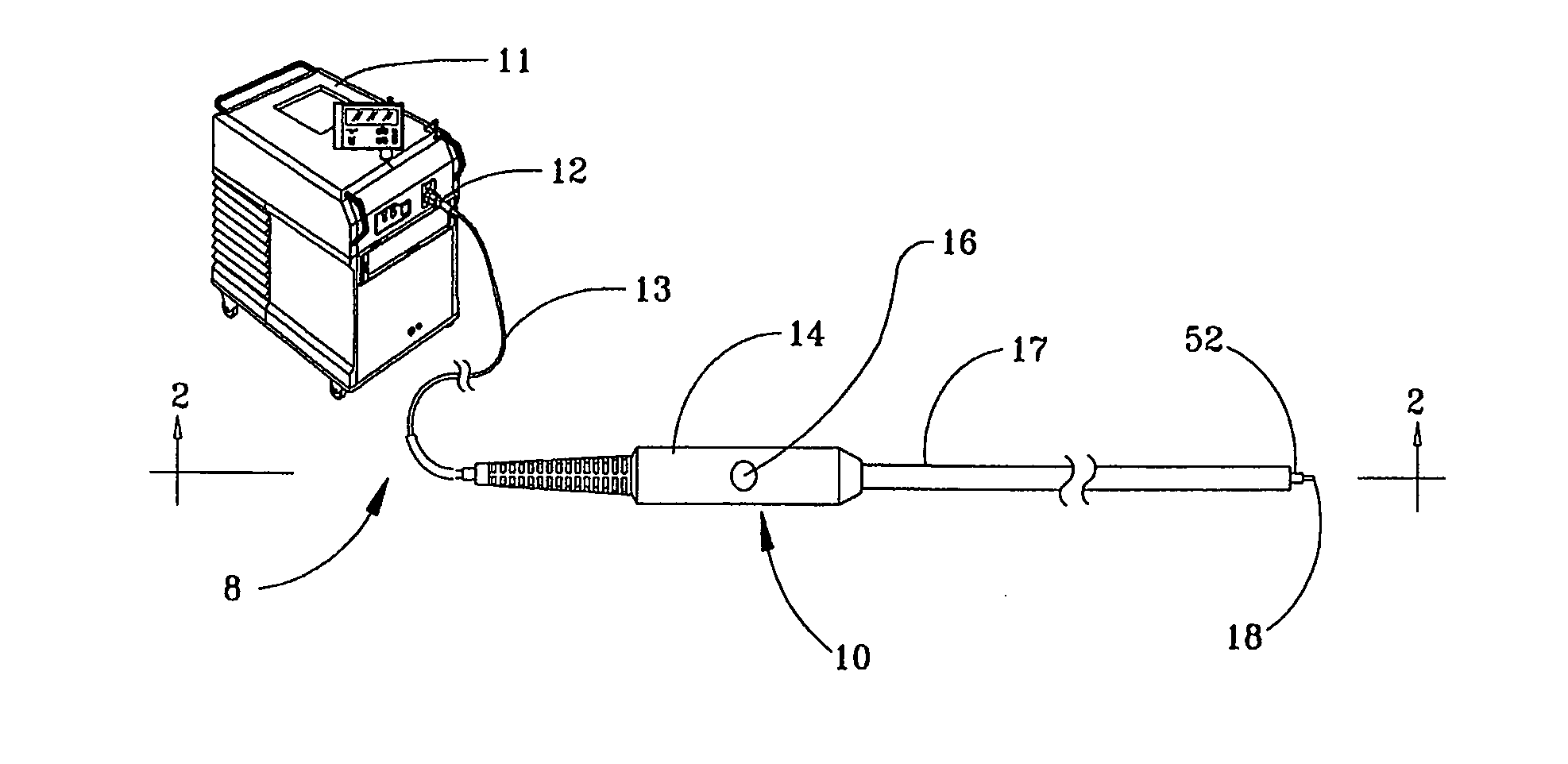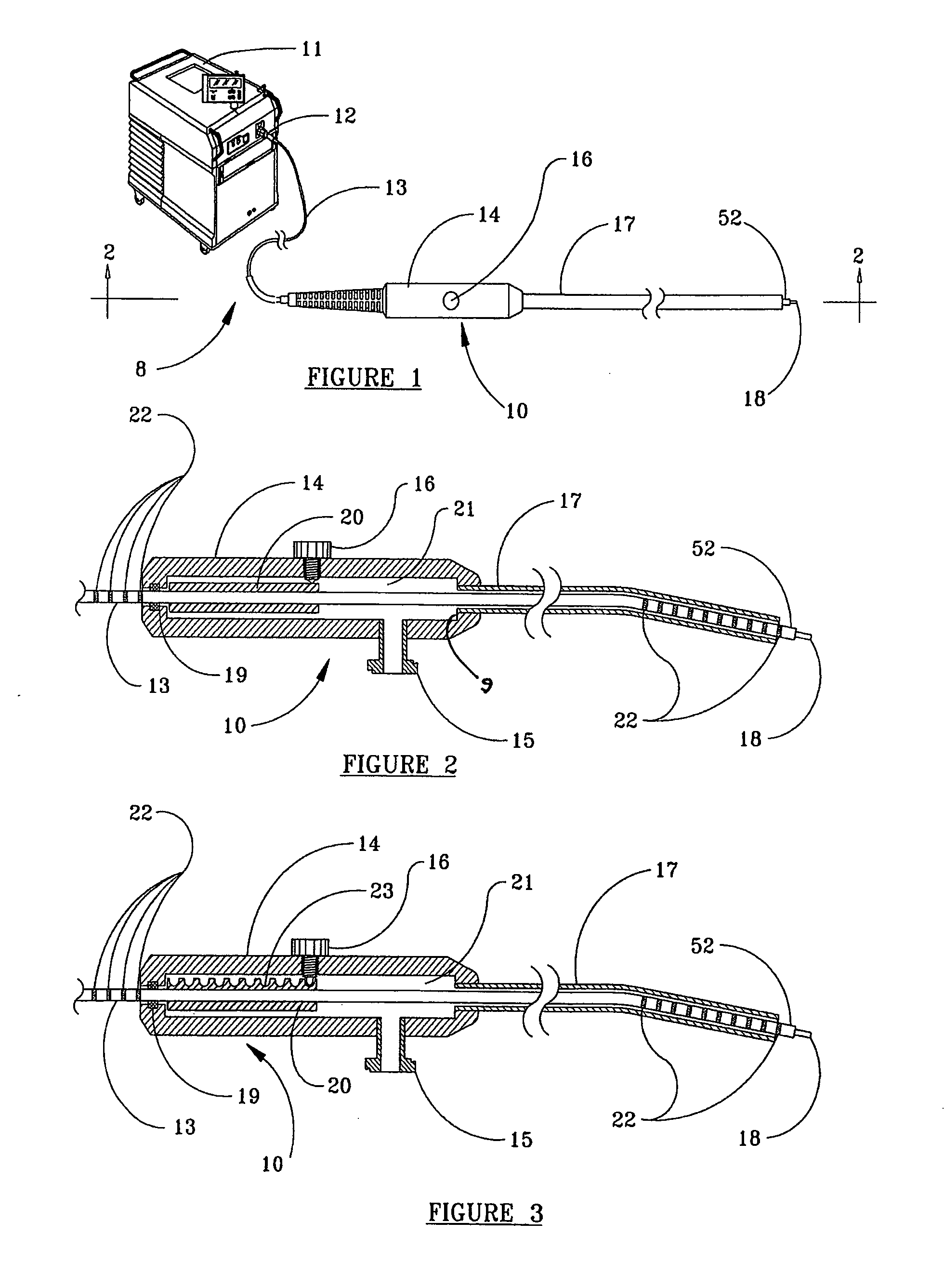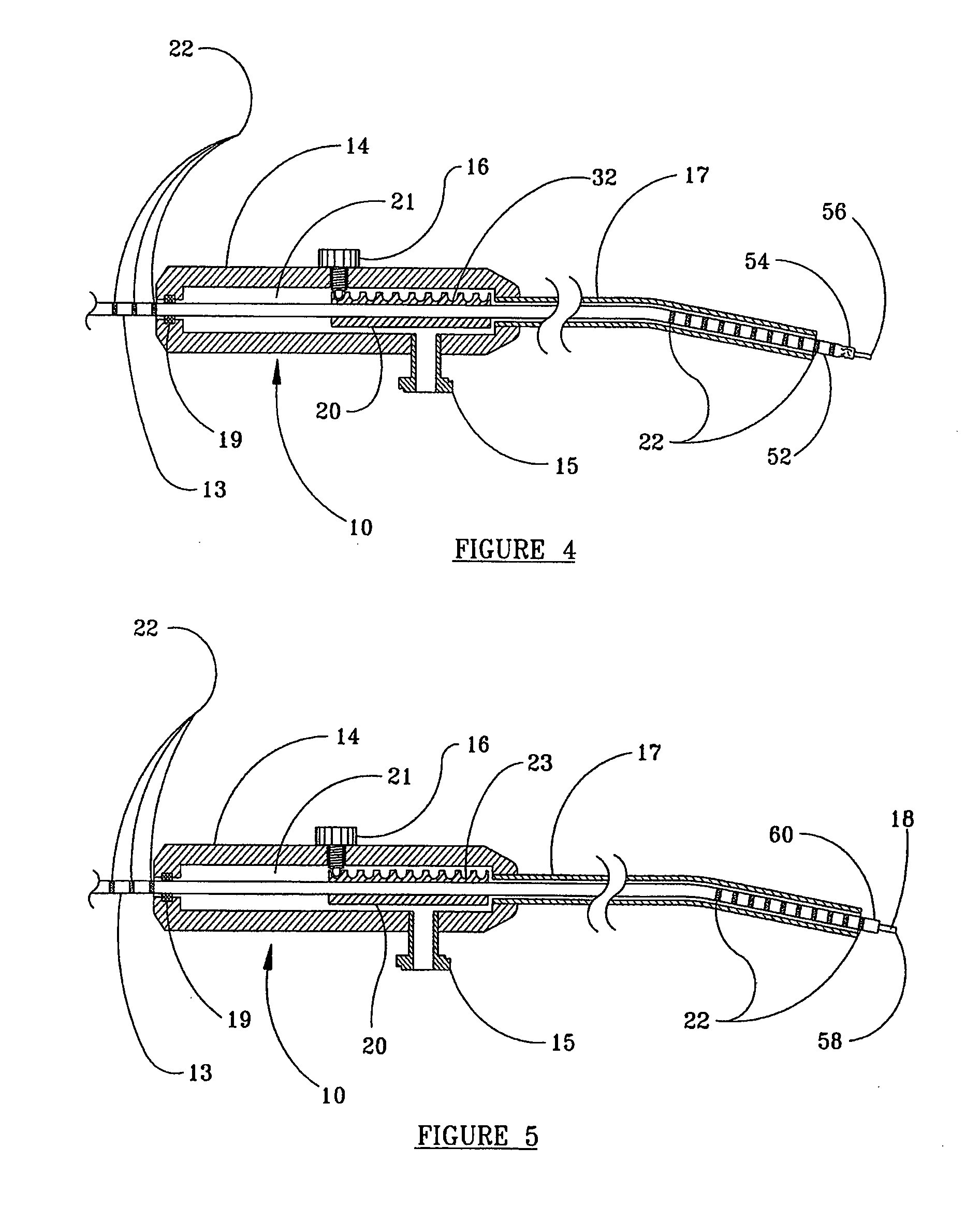Fiber optic device with controlled reuse
a fiber optic device and fiber optic technology, applied in the field of fiber optic devices, can solve the problems of optical fiber subject to fracture, laser energy emitted in an undesired direction, unintended tissue, nerve or blood vessel, etc., and achieve the effect of controlling limiting the length of optical fiber
- Summary
- Abstract
- Description
- Claims
- Application Information
AI Technical Summary
Benefits of technology
Problems solved by technology
Method used
Image
Examples
first embodiment
[0028]Referring now to the drawings and initially to FIGS. 1 and 2, a first embodiment is shown in relation to system 8 for delivering laser energy. As seen in FIG. 1, system 8 is comprised of a fiber optic device 10 and a source of laser energy 11. Fiber optic device 10 comprises optical fiber 13, handpiece 14, and a connector 12 that optically couples optical fiber 13 to the source of laser energy 11. Optical fiber 13 has core 18 surrounded by a buffer coating 52, and extends through an optional rubber or plastic strain relief, as known in the art, and through an enclosing body or handpiece 14. A fiber advancement mechanism is associated therewith. Handpiece 14 is preferably made of a sturdy metal, such as medical grade stainless steel, or a rigid, durable plastic, such as acetal homopolymer resin, available from Interstate Plastics, Sacramento, Calif. Handpiece 14 is comprised of two halves, which can be joined together with a locking mechanism, screws and / or an adhesive.
[0029]Op...
second embodiment
[0038]As illustrated in FIGS. 3-5, in the present invention, sheath 20 has indexing capability in the form of an array of adjacent indentations 23 on its upper surface, opposite set screw 16. Set screw 16 may be provided with a rounded tip that enters one of indentations 23 to removably fix the optic fiber 13 in place within handpiece 14. Preferably the tip of set screw 16 and the indentations 23 are complementary. The number of indentations 23 in the array preferably corresponds to the number of intended uses of device 10, as described heretofore. The spaces between the centers of indentations 23 are preferably equal to the amount of intended protrusion of optical fiber 13 from the free end of cannula 17, i.e., length of advance of buffer coating 52 and core 18 of optical fiber 13 after each use. The spacing of indentations provides a convenient indexing of the optical fiber as it is readied for shortening of its free end, prior to a subsequent use. As shown in FIG. 3, the distal e...
third embodiment
[0042]FIG. 6 illustrates the present invention. In this embodiment, handpiece 14 has two viewing slots for the stop member on its top surface, one distal to expose sheath 20 that receives set screw 16, and a second, proximal slot 24. In the preferred embodiment, these slots are covered by a transparent glass or clear plastic insert and sealed with a gasket material, as known in the art, to provide a window so that sheath 20 and indentations 23 can be viewed by a user, while preventing leakage of fluid.
[0043]Optionally, slot 24 may be provided in one or both sides of handpiece 14, extending throughout most of the length of handpiece 14, to provide the functionality of the two slots shown in FIG. 6. When thus constructed, the single slot formed in handpiece 14 is filled by a glass or clear plastic insert and sealed with a gasket material as described above, to enable the operator to fully view sheath 20 and indentations 23.
[0044]In the embodiment shown in FIG. 6, sheath 20 with indent...
PUM
 Login to View More
Login to View More Abstract
Description
Claims
Application Information
 Login to View More
Login to View More - R&D
- Intellectual Property
- Life Sciences
- Materials
- Tech Scout
- Unparalleled Data Quality
- Higher Quality Content
- 60% Fewer Hallucinations
Browse by: Latest US Patents, China's latest patents, Technical Efficacy Thesaurus, Application Domain, Technology Topic, Popular Technical Reports.
© 2025 PatSnap. All rights reserved.Legal|Privacy policy|Modern Slavery Act Transparency Statement|Sitemap|About US| Contact US: help@patsnap.com



